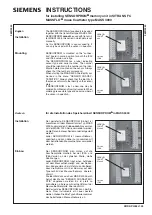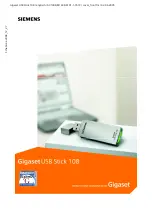
LaCie d2 USB 3.0
• D
esign
by
n
eil
P
oulton
Troubleshooting
User Manual
page 29
Problem
Question
Solutions
The drive is making clicking
noises.
Is the sound “soft clicking” or “hard clicking”?
Soft clicking
can be the normal sound of the drive working. If the drive is functional, this is normal. Drives
do not typically give an indication of any problems prior to failure, so it does not mean it is about to fail if
the drive is making a clicking sound and still functioning. If the drive is non-functional, there are two pos-
sible causes:
✦
The drive could be corrupted. Reformatting the drive can solve this issue.
✦
The drive could have a failure in the external power supply or power cable. Try using a different one,
if possible.
Hard clicking
is a very noticeable sound, and is akin to hearing metal-on-metal impacts. Hard clicking may
be a sign of physical failure. If nothing traumatic happened to the drive prior to this behavior, consider it to
be soft clicking, and troubleshoot the problem as suggested above.
The drive does not turn on
automatically when con-
nected to the computer.
The automatic power on/off feature works by measuring power changes in the data cable. Unfortunately,
not all computers change the amount of power coming from those ports. As the power amount doesn’t
change, the drive is unaware when to shut down. Verify this by shutting down the computer, then unplug
the computer from power for a while. The drive will shut down when the power stops coming from the
ports.
Available disk spaces does
not increase after deleting
files.
When a file is deleted, the space used on the disk is not reclaimed until the file is truly erased. The trash
(Recycle Bin on Windows) is actually a hidden folder located in each hard drive. To completely delete the
file, another step must be performed.
To empty this folder and reclaim the space, right-click the Recycle Bin icon, and left-click
Empty Recycle Bin
on the menu that appears.




































